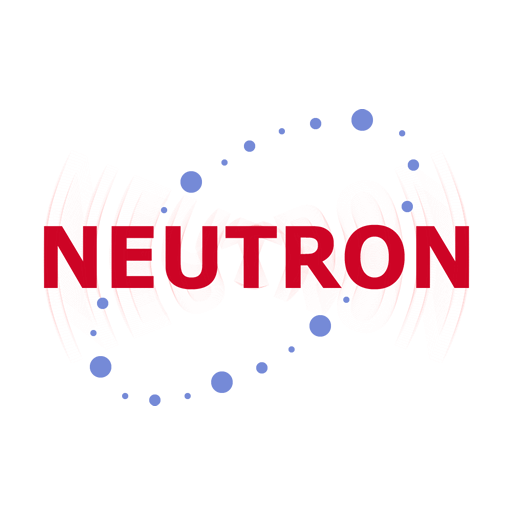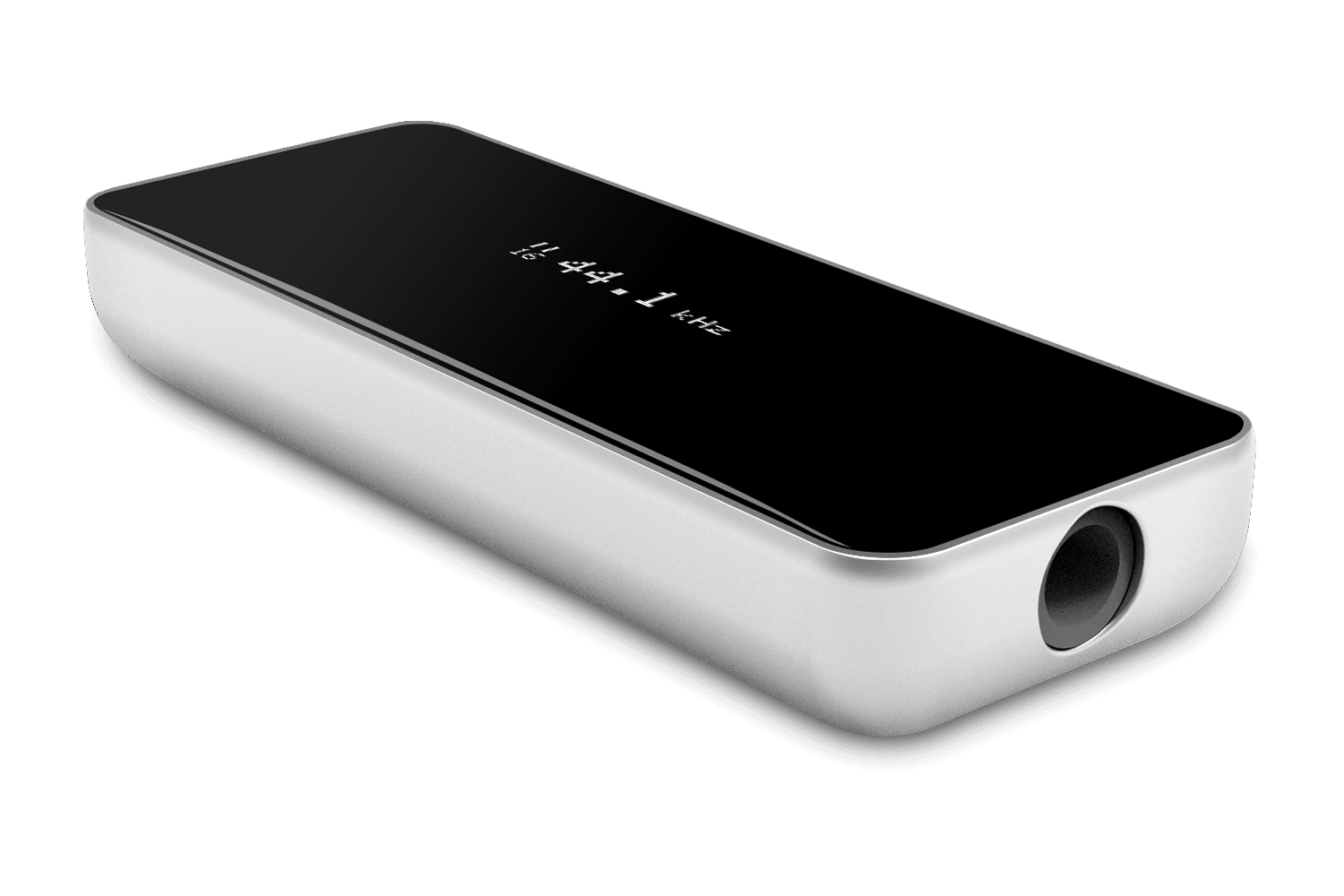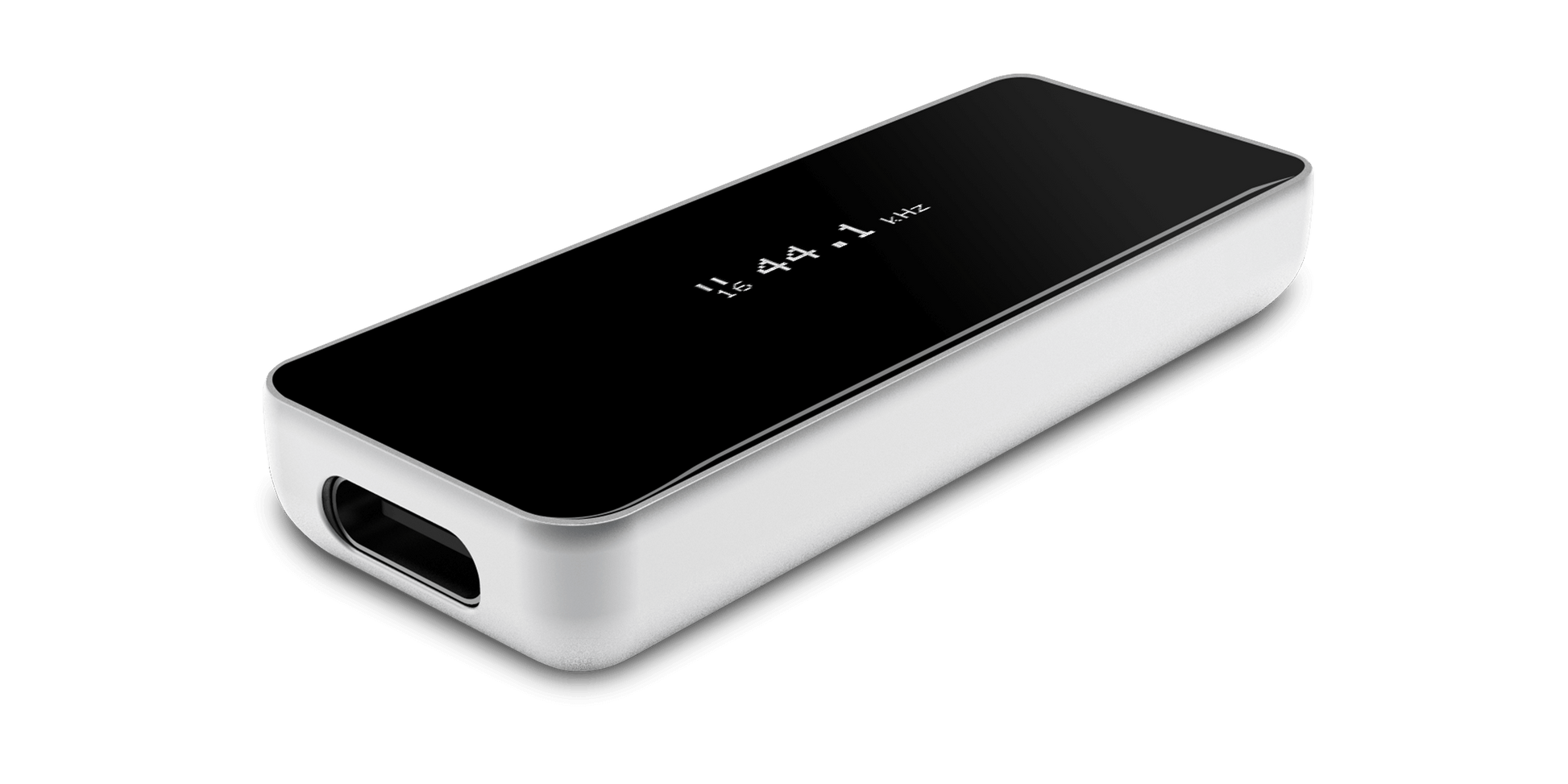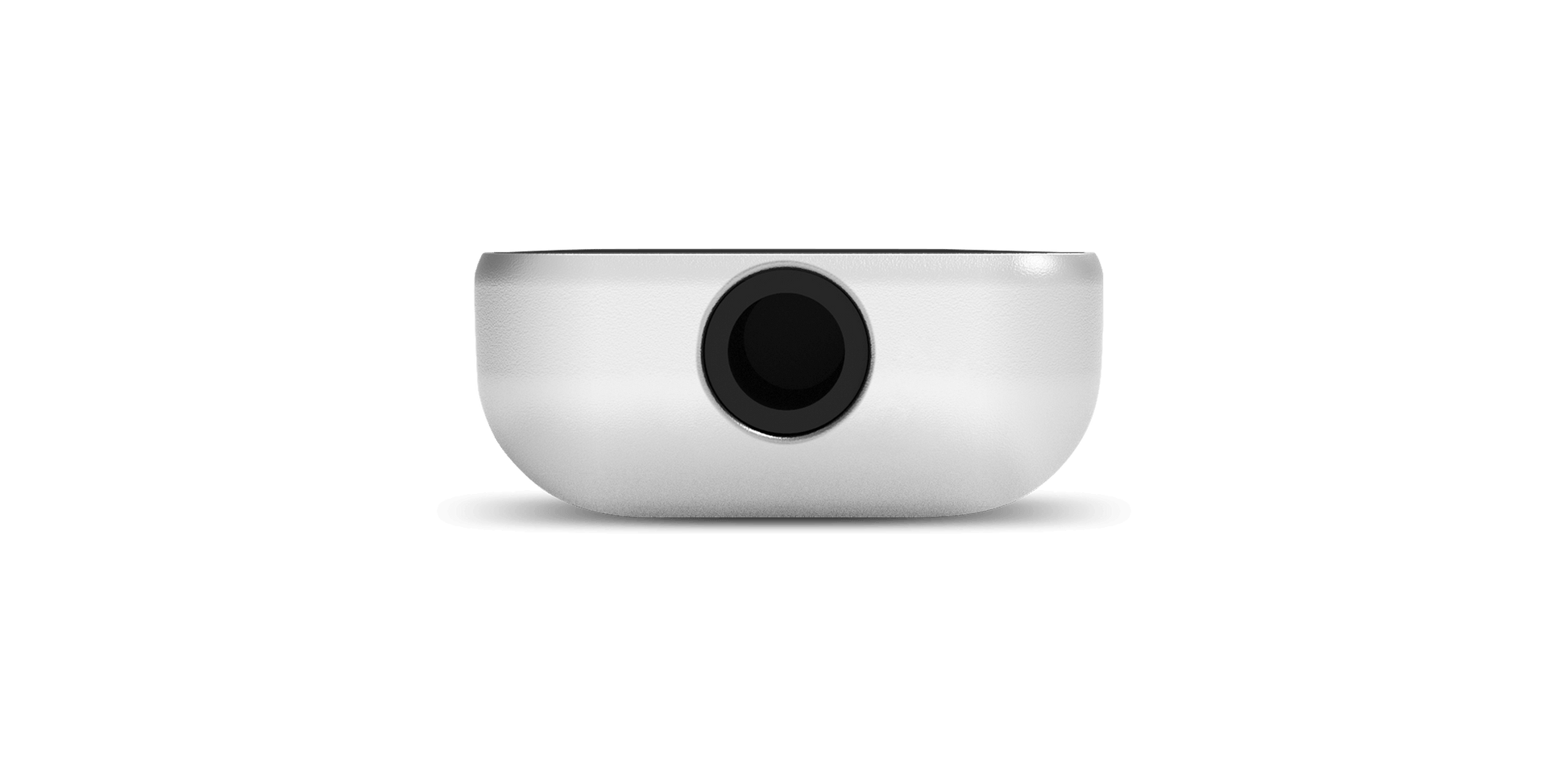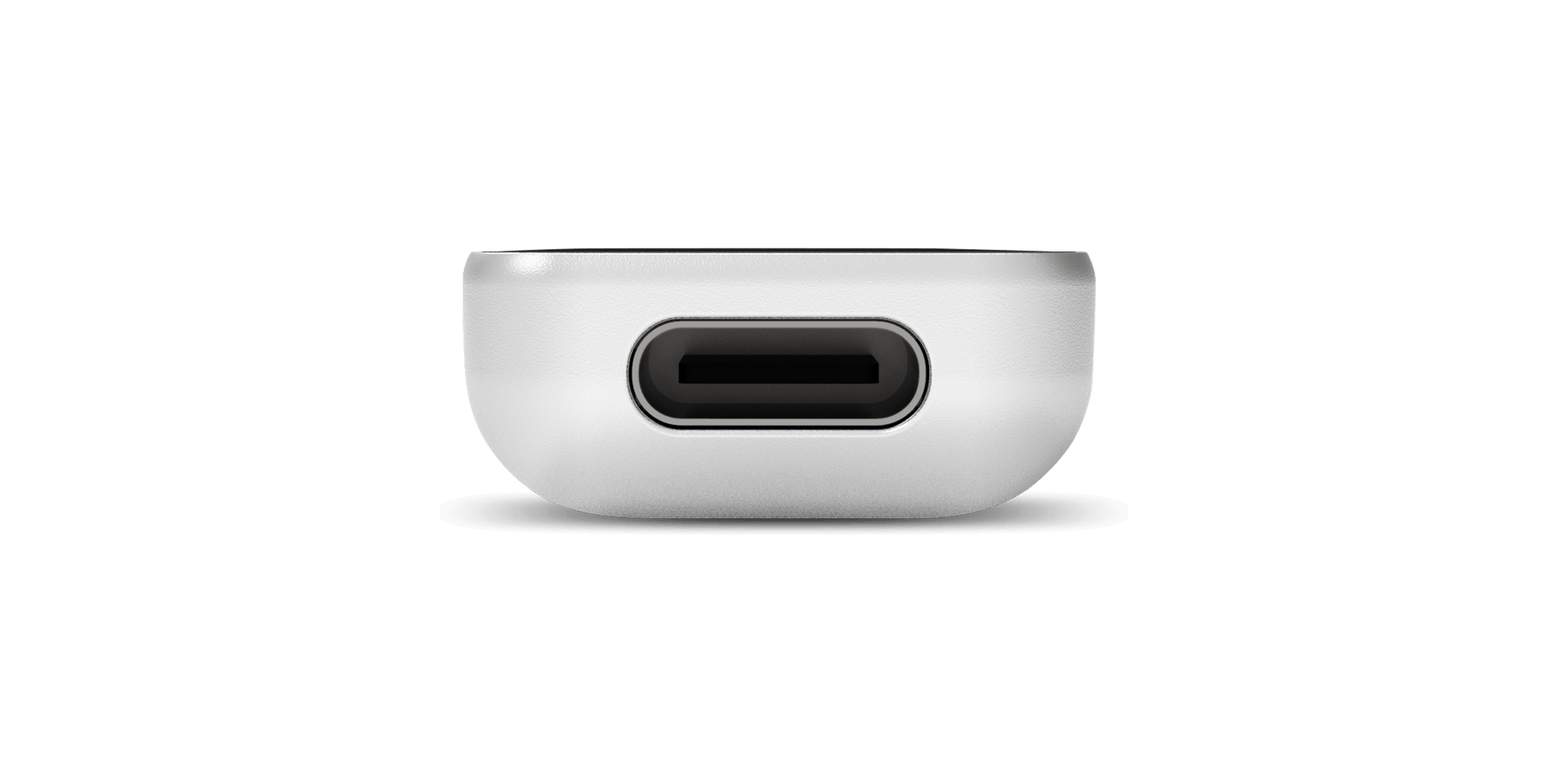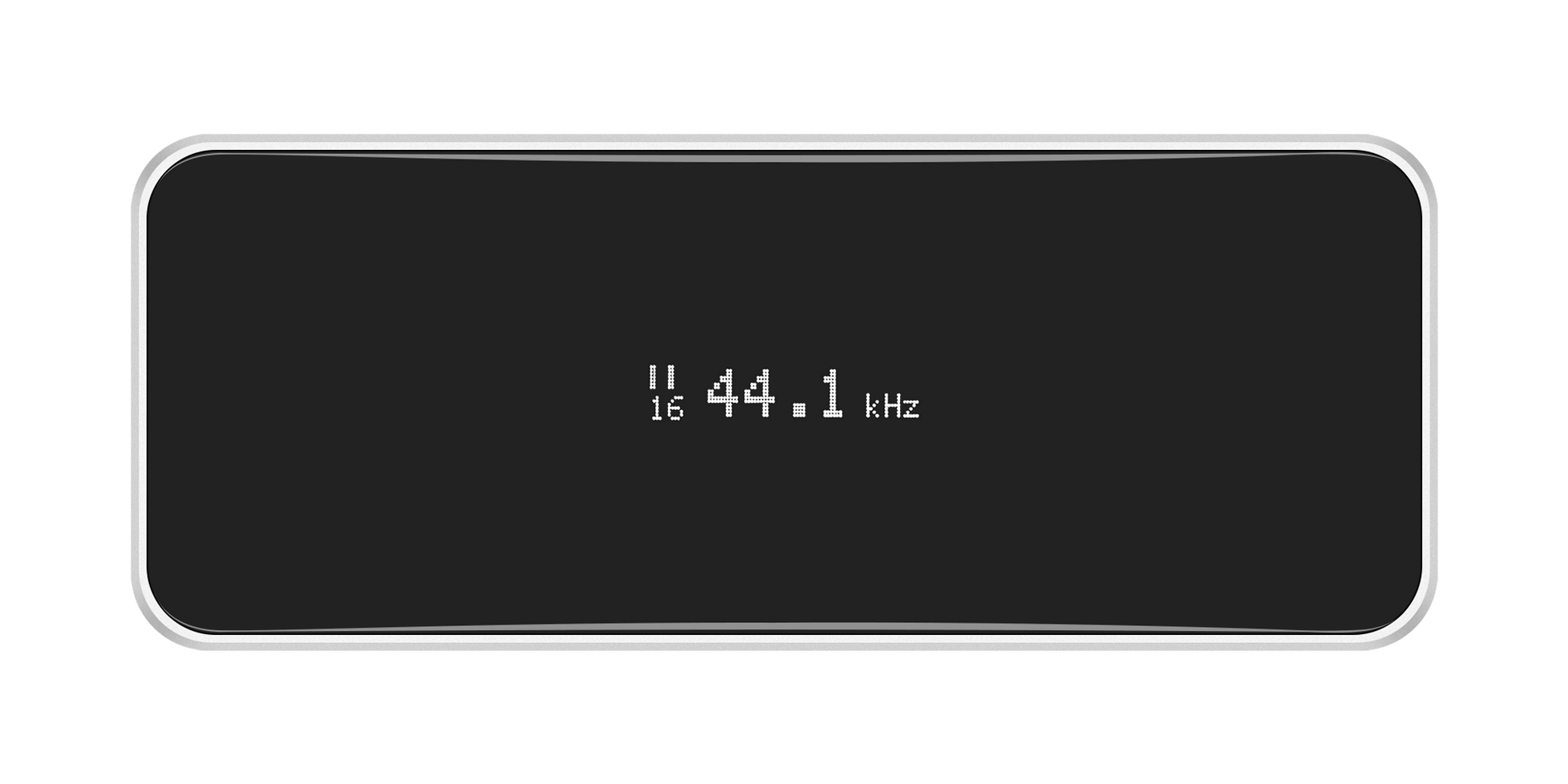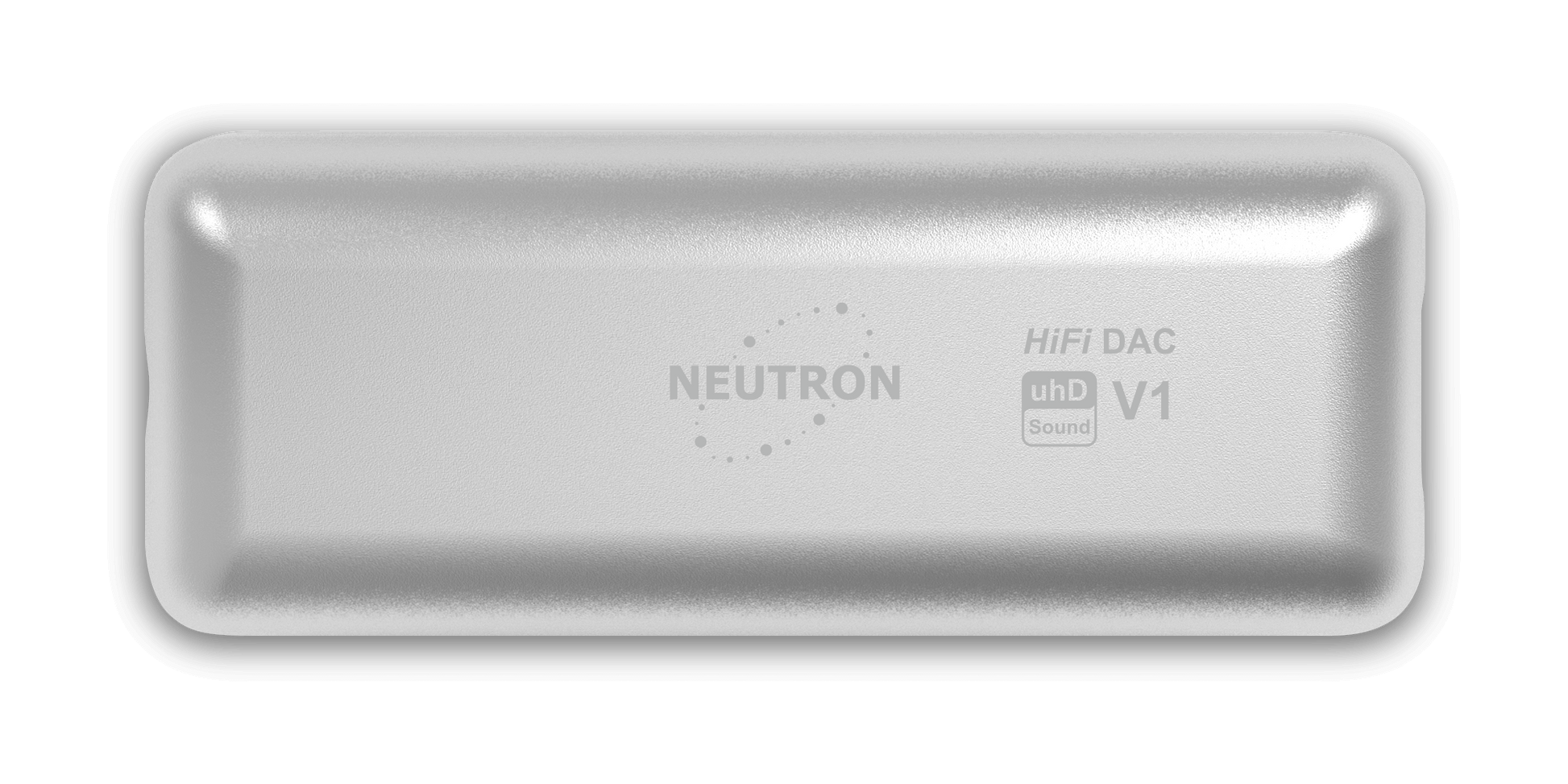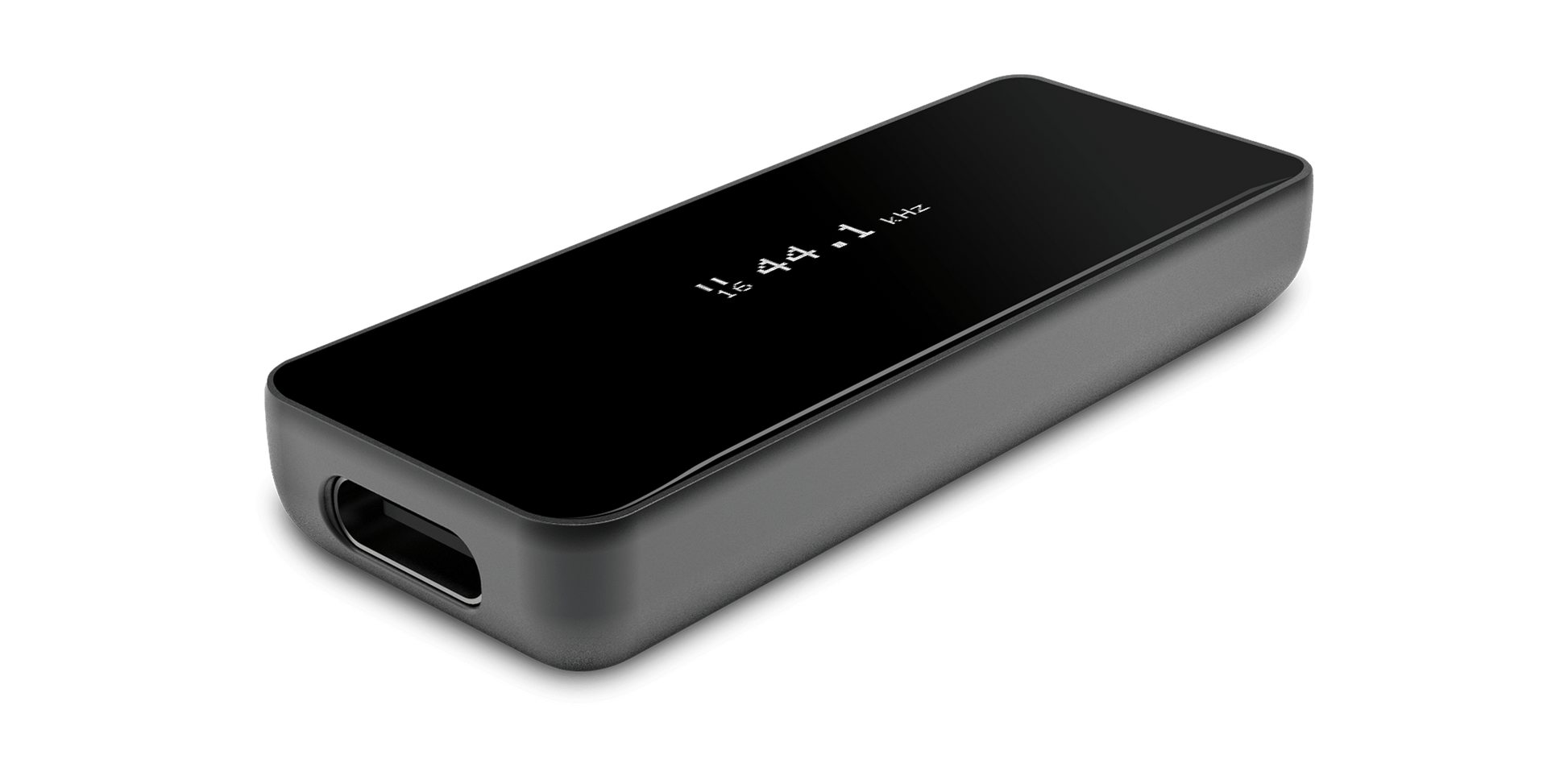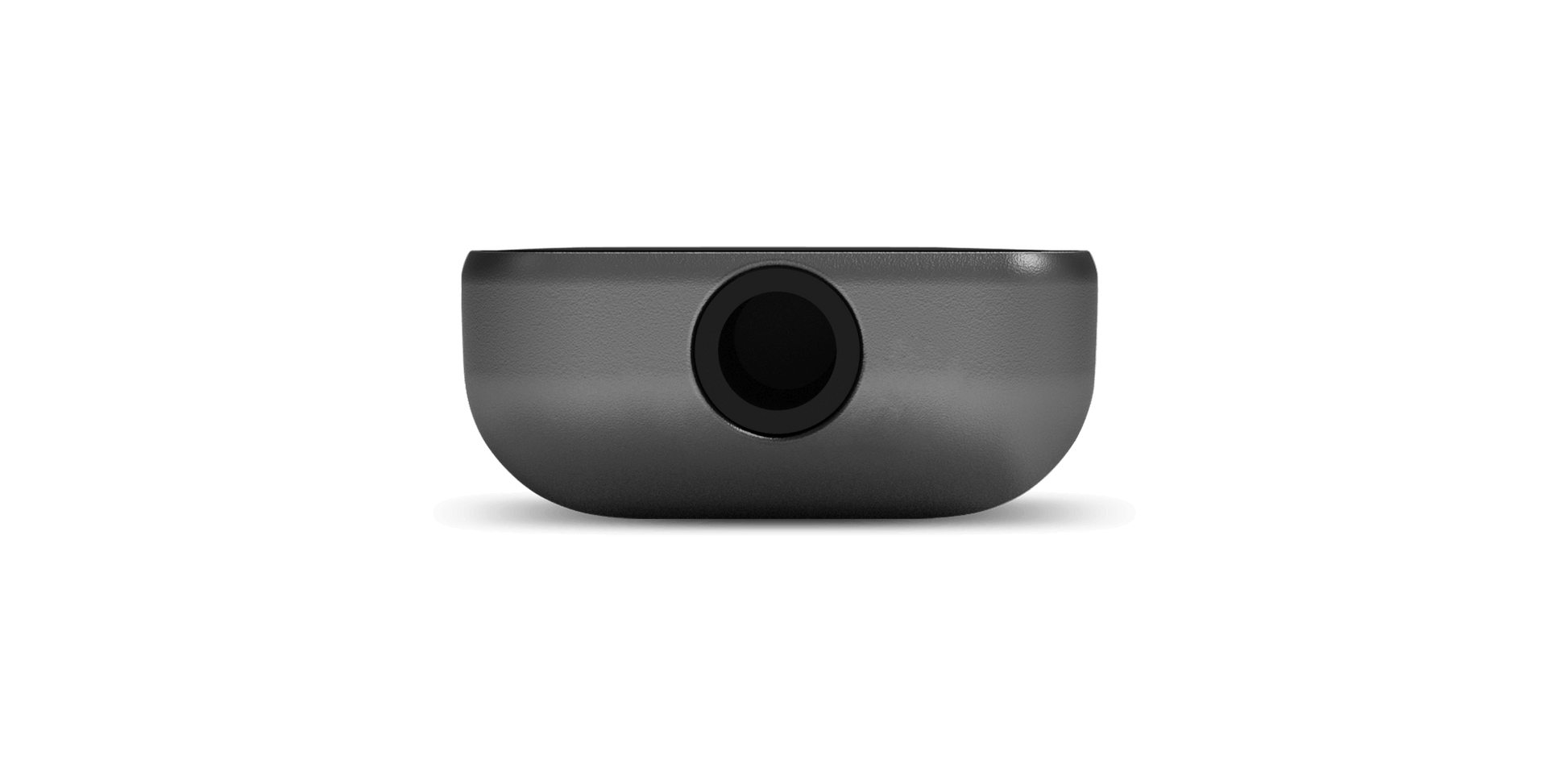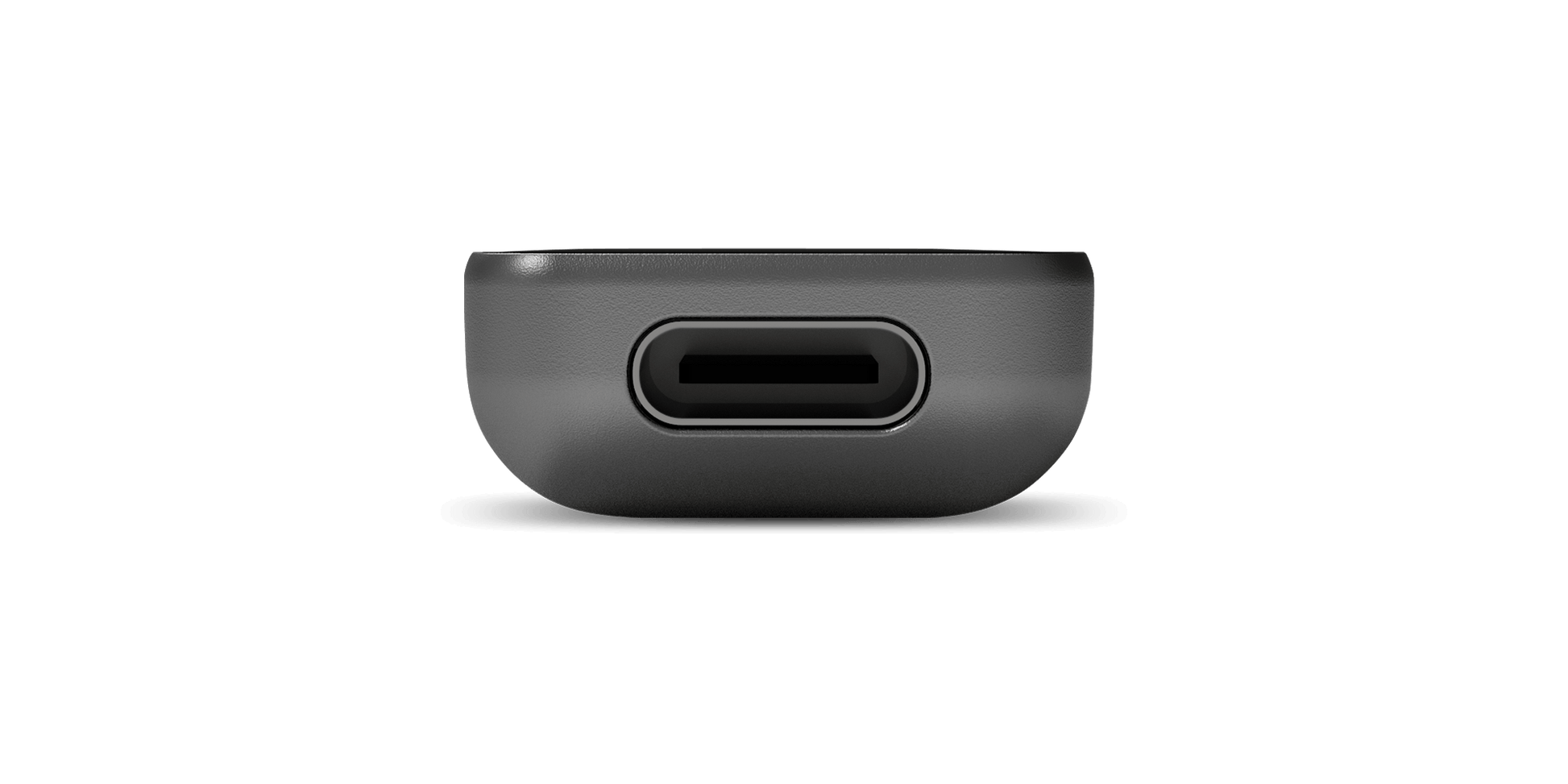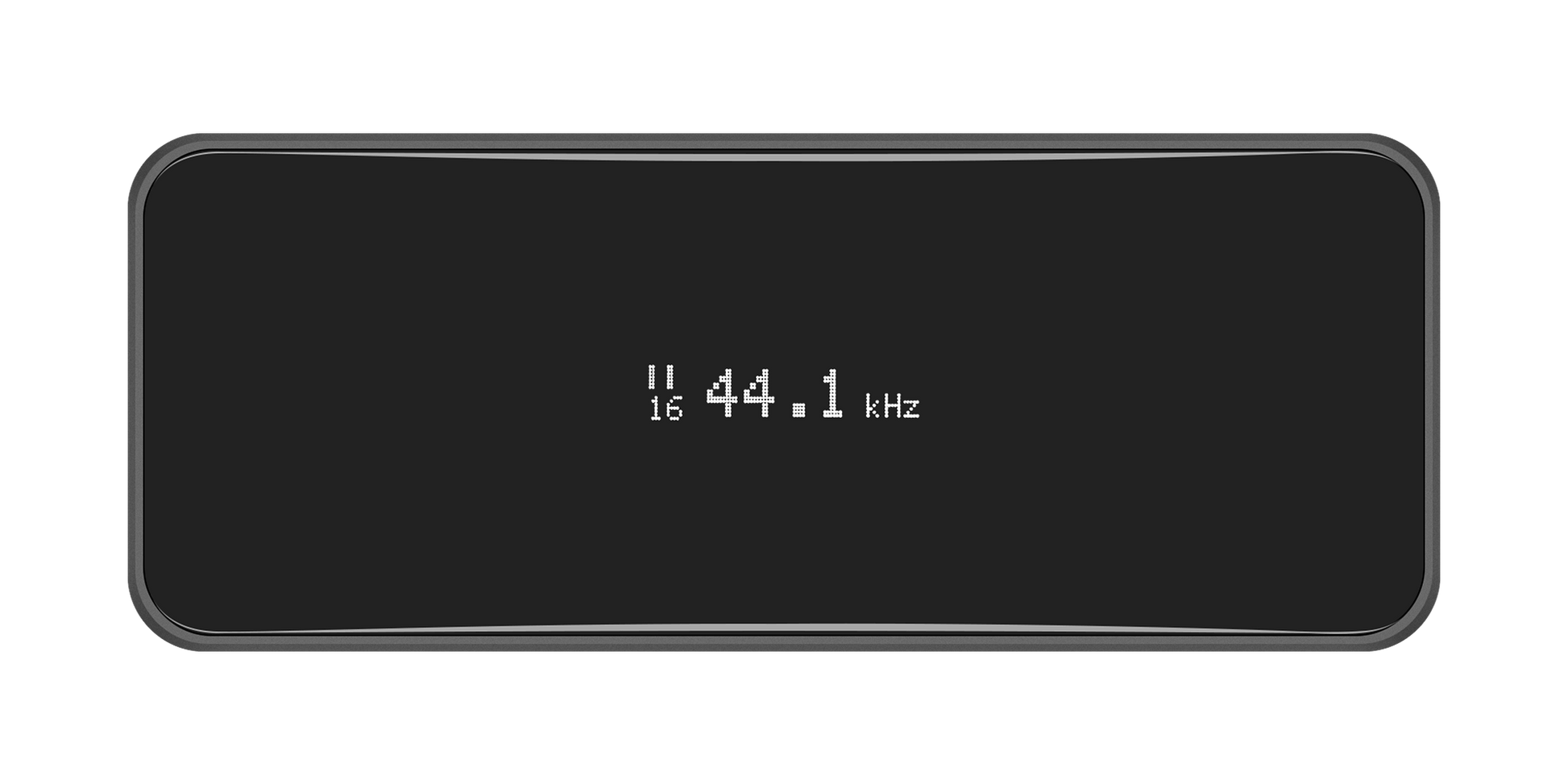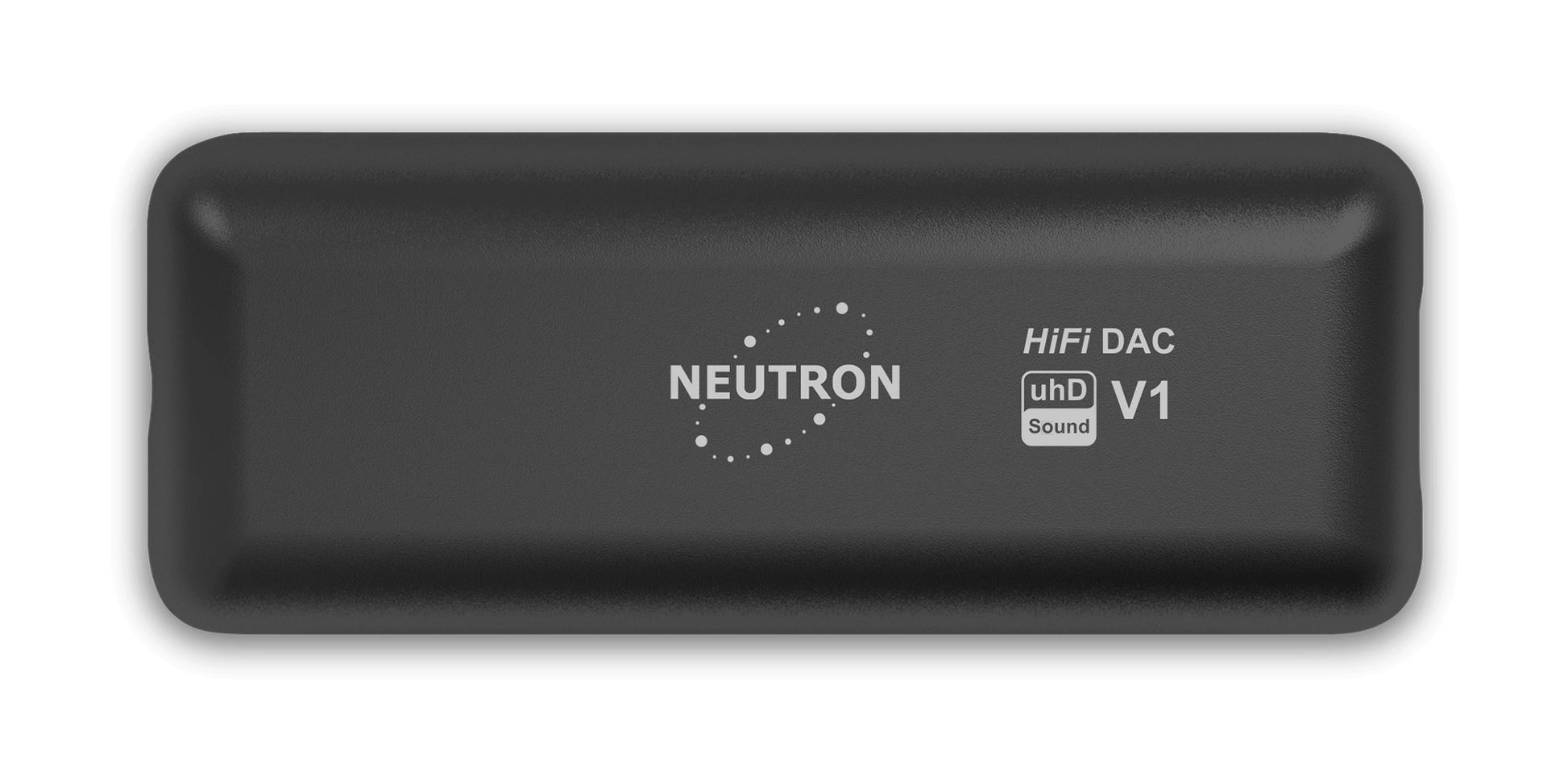Neutron Code Store
Neutron HiFi™ DAC V1 | Tragbarer USB-DAC: Kopfhörerverstärker und Vorverstärker mit DSP
Neutron HiFi™ DAC V1 | Tragbarer USB-DAC: Kopfhörerverstärker und Vorverstärker mit DSP
Verfügbarkeit für Abholungen konnte nicht geladen werden
Der Neutron HiFi™ DAC V1 ist ein hochauflösender, audiophiler USB-DAC, Kopfhörerverstärker und Vorverstärker mit fortschrittlichem integriertem DSP – PEQ, Crossfeed, FRC, Surround und verlustfreier Balance. Er vereint Mobilität, Leistung und Vielseitigkeit. Er zählt zu den präzisesten und musikalischsten USB-DACs seiner Klasse, was durch zahlreiche Tests bestätigt wird. Die technische Exzellenz wird durch das renommierte Audio Science Review Forum bestätigt. Die vollständige Gerätebeschreibung finden Sie auf der entsprechenden Seite . .
Audioformatfunktionen:
- PCM bis zu 32 Bit/384 kHz
- DSD64 – DSD256 (Native DSD und DoP)
DSP-Funktionen:
- Parametrischer Equalizer (PEQ) mit 10–40 Bändern pro Kanal und vielen Voreinstellungen
- Quertransport
- Korrektur des Frequenzgangs von Kopfhörern (FRC, AutoEq- Headset-Profile)
- Surround (Ambiophonics RACE)
- Automatische Verstärkungskorrektur (AGC) für Inline-Mikrofon
Hauptmerkmale:
- Inline-Mikrofonunterstützung mit mikrofonspezifischem DSP
- Energieeffizientes Design, das den Akku des Mobilgeräts nicht unnötig belastet
- Vollständig verifiziert , einschließlich aller PCM- und DSD-Modi
- Plattformübergreifend , störungsfrei mit jedem USB-Host
- Vollständig konfigurierbar mit der NConfigurator-App unter Windows, macOS, Linux, Android und von überall mit der Web-App
Der DAC V1 bietet beispiellose Flexibilität. Nutzen Sie ihn als hochpräzisen Vorverstärker für Ihren Verstärker oder schließen Sie Ihre Kopfhörer oder IEMs direkt an, um ein intensives Hörerlebnis zu genießen. Der DAC V1 basiert auf audiophiler Expertise und der Entwicklung des Neutron Music Players und bietet außergewöhnliche Klangqualität und Leistung.
Der DAC V1 verbraucht so wenig Strom wie möglich von Ihrem Host-Gerät, schont so den Akku Ihres Mobilgeräts und ermöglicht lange Hörsessions. Er ist auf ein vollmundiges Klangbild und -erlebnis ausgelegt, da Sie keine einfachen Sinuswellen hören, sondern Musik, ein komplexes, dynamisch veränderliches Signal! Dies wird durch zahlreiche Testberichte und zufriedene DAC V1-Nutzer bestätigt.
Der DAC V1 ist die perfekte Kombination aus Mobilität und Leistung. Sein kompaktes Design verbirgt seine leistungsstarken Funktionen, die mit dem NConfigurator optimiert werden können. App.
Schützen Sie Ihr Gerät mit dem Neutron HiFi ™ Case für DAC V1.
Für optimale Leistung empfehlen wir die Verwendung von DAC V1 mit Neutron HiFi™ USB-Kabeln.
Kostenloser Versand ab einem Bestellwert von 210 USD
Der Preis beinhaltet Mehrwertsteuer und Einfuhrzölle
Erhalten Sie 10 % Rabatt auf den Neutron HiFi Isolator V1
Erhalten Sie 10 % Rabatt auf das 2. USB-Kabel
Entworfen in Europa.
Spezifikation
| Funktion | Audiophiler Audioadapter USB-C™ auf 3,5-mm-Kopfhörerbuchse mit erweiterter DSP-Funktionalität |
| Regler | NXP K-Serie |
| DAC | ES9219Q |
| Digitaler Eingang | USB-C™-Buchse |
| Analogausgang | 3,5 mm unsymmetrischer Kopfhöreranschluss (24 K vergoldet) |
| Ausgangspegel | 2 Vrms, 1 Vrms (optional über NConfigurator) |
| Ausgangsimpedanz | < 0,5 Ω |
| Frequenzgang | Analoge Leistung: 0–300 kHz (alle Frequenzkomponenten von 0–192 kHz werden ohne Dämpfung bei der maximalen PCM-Frequenz von 384 kHz durchgelassen) |
| USB-Audio | Asynchron (erweiterte Regelung der USB-Übertragungsgeschwindigkeit) |
| Audio-Uhr | 2X SPXO mit ultraniedrigem Phasenrauschen: 45,1584 MHz [44,1, 88,2, 176,4, 352,8 kHz], 49,152 MHz [48, 96, 192, 384 kHz] |
| Kanäle | 2 (Stereo) |
| PCM-Bits | 16, 24, 32 |
| PCM-Frequenz | 44100, 48000, 88150, 96000, 176400, 191500, 352800, 384000 |
| Natives DSD | 64, 128, 256 |
| DSD über PCM (DoP) | 64, 128 |
| DSP (Soundeffekte) | Parametrischer EQ (20/10-Bänder, pro Kanal) mit Vorverstärker-Verstärkungsregelung, grafische EQ-Voreinstellungen, Frequenzgangkorrektur (FRC) mit AutoEq-Datenbank, Crossfeed, Surround (Ambiophonics RACE), verlustfreie Balance, DSP-Effektverkettung |
| Headset-Mikrofon | Unterstützt (CTIA) |
| Headset-Tasten | Unterstützt (Wiedergabe/Pause, Stopp, Nächster/Vorheriger Titel, Sprachbefehl, Lautstärke +/-) |
| Mediensteuerung | Beschleunigungsmesser: 2 anpassbare Aktionen (Doppeltippen oben/unten oder links/rechts) |
| OLED-Bildschirm | Ja, mit automatisch rotierender Anzeige |
| Kompatibilität | USB-C / USB Audio 2.0, Apple iPhone/iPad erfordert Lightning-auf-USB-Kamera-Adapter für Geräte mit Apple Lightning-Anschluss |
| Firmware-Update | Unterstützt (OTA über das Konfigurator-Dienstprogramm) |
| Farbe | Silber oder Eisengrau |
| Maße | 50 x 19,9 x 9,6 mm (L x B x H) |
| Gewicht | 13 gr |
Weitere Einzelheiten finden Sie auf der Produktseite des Geräts.
Aktie
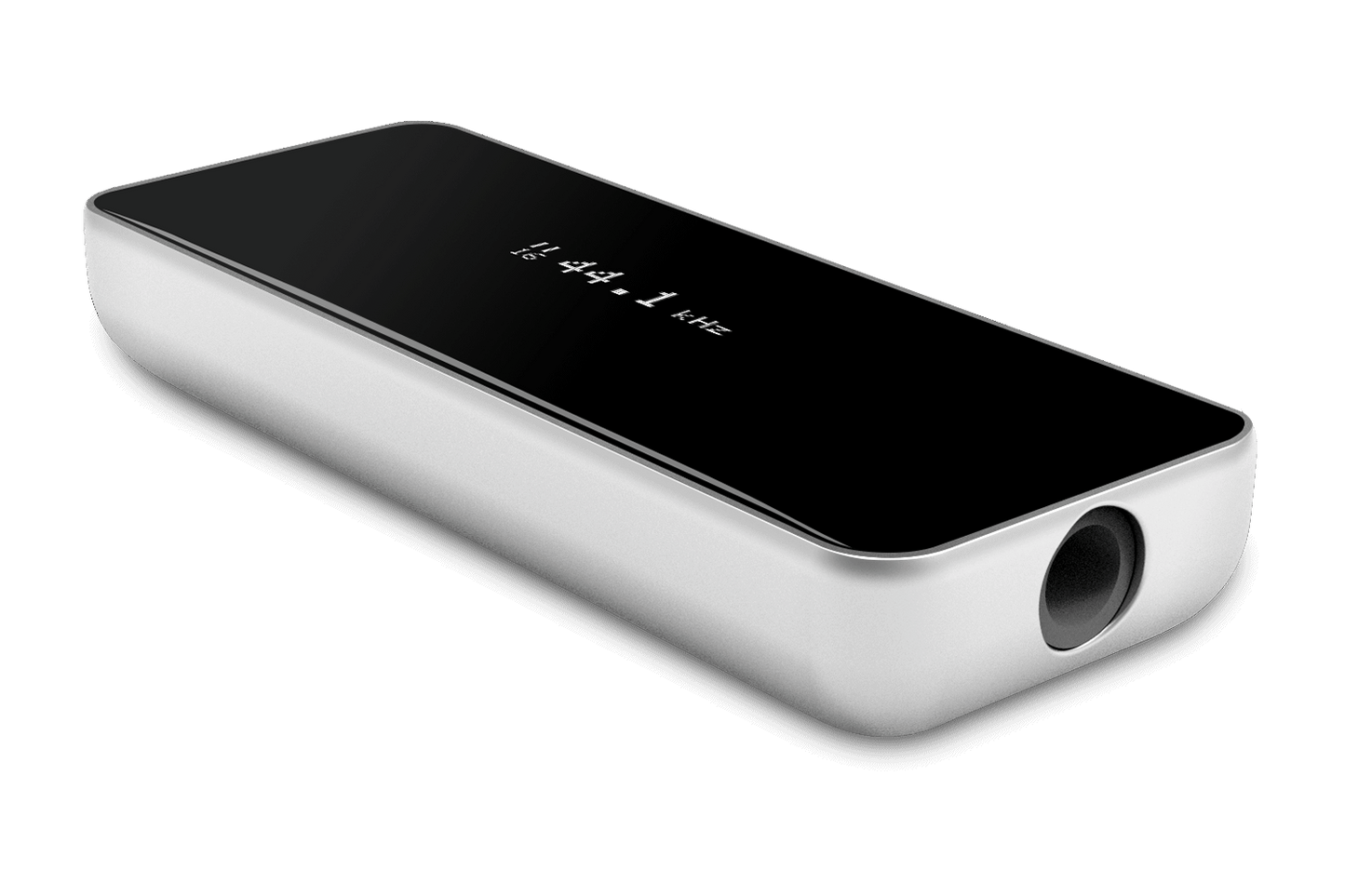
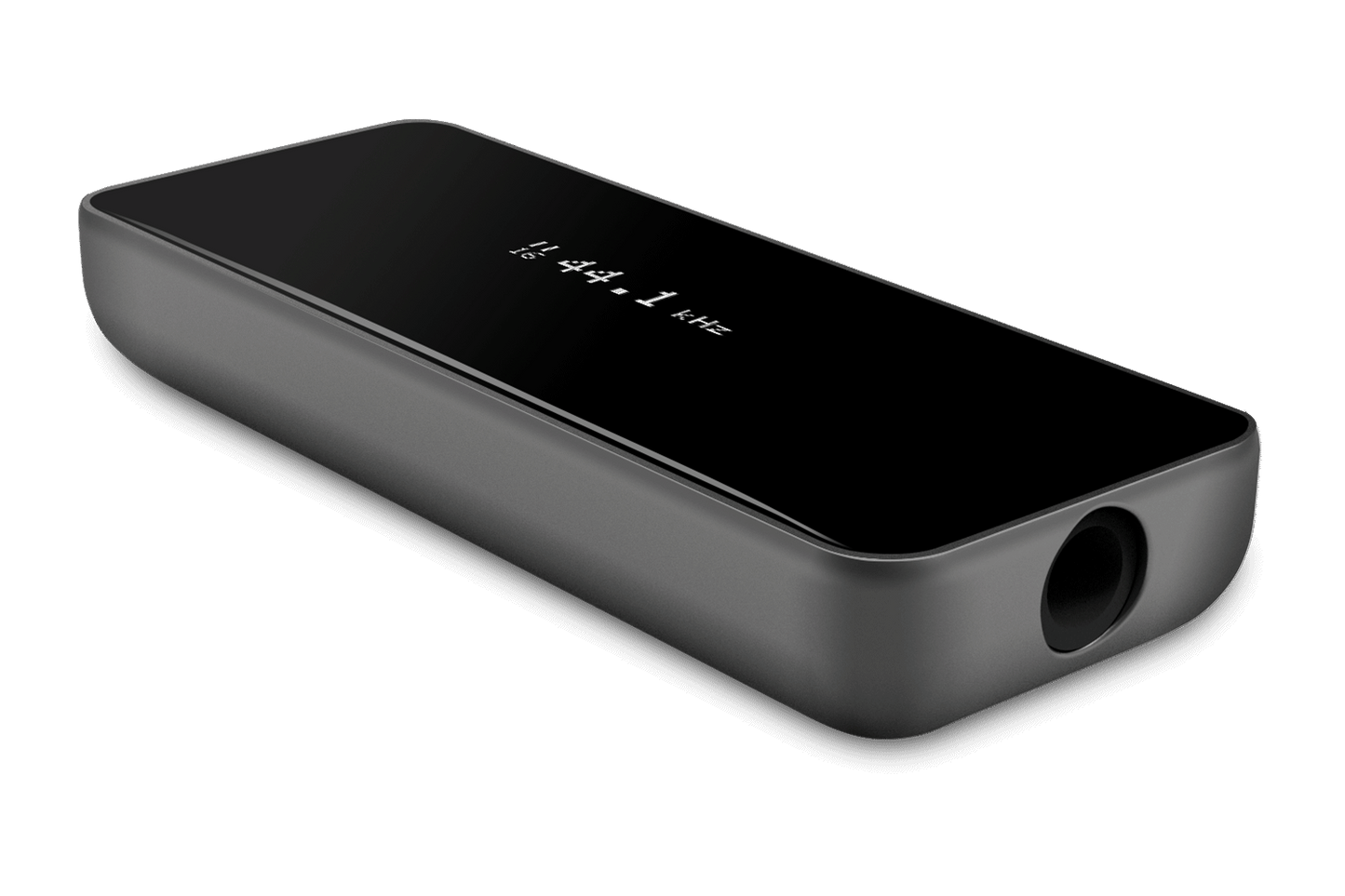
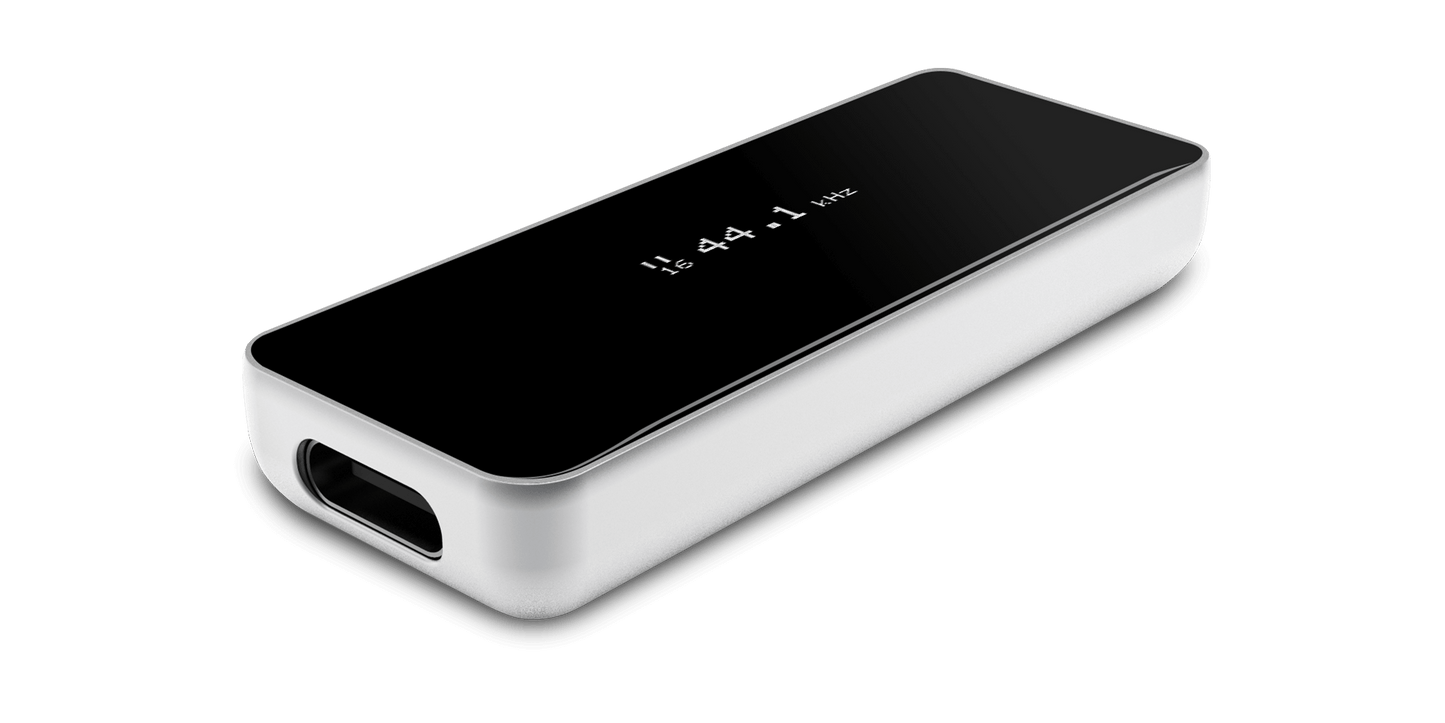
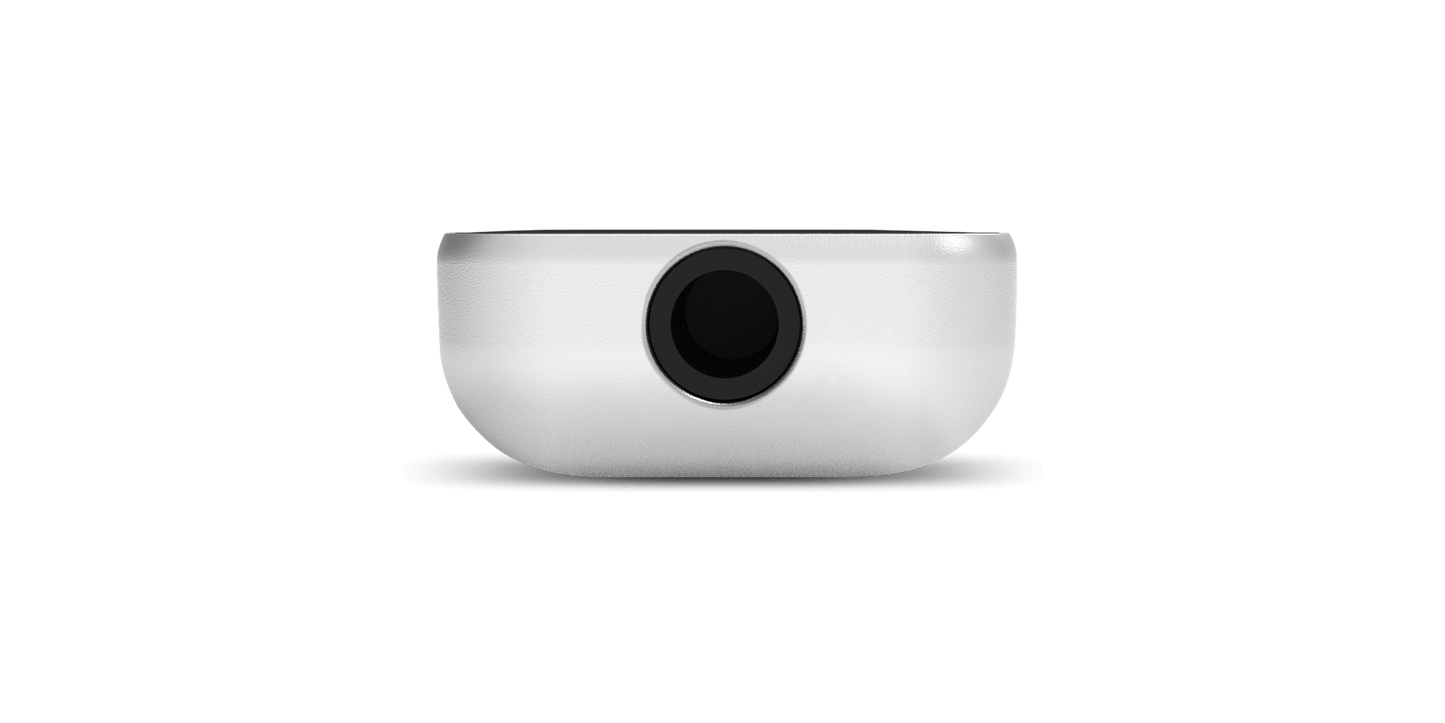
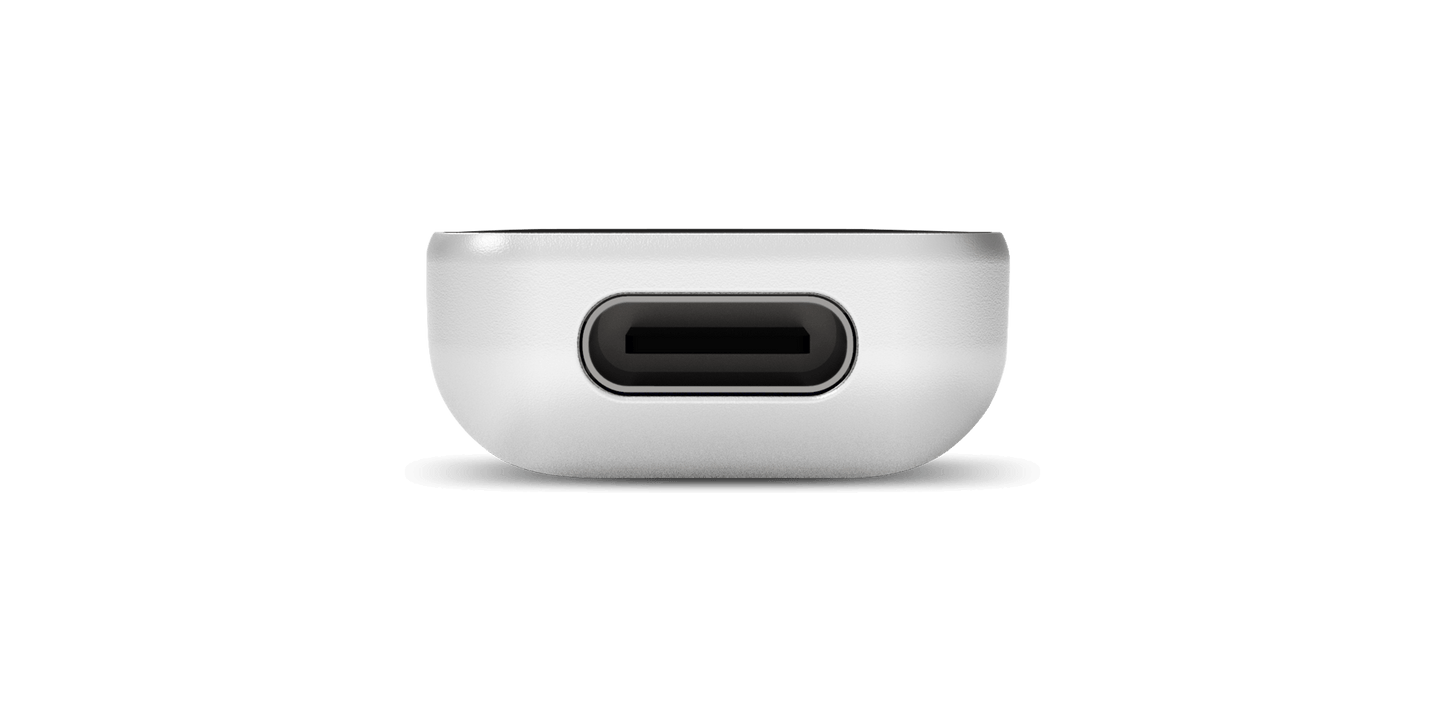
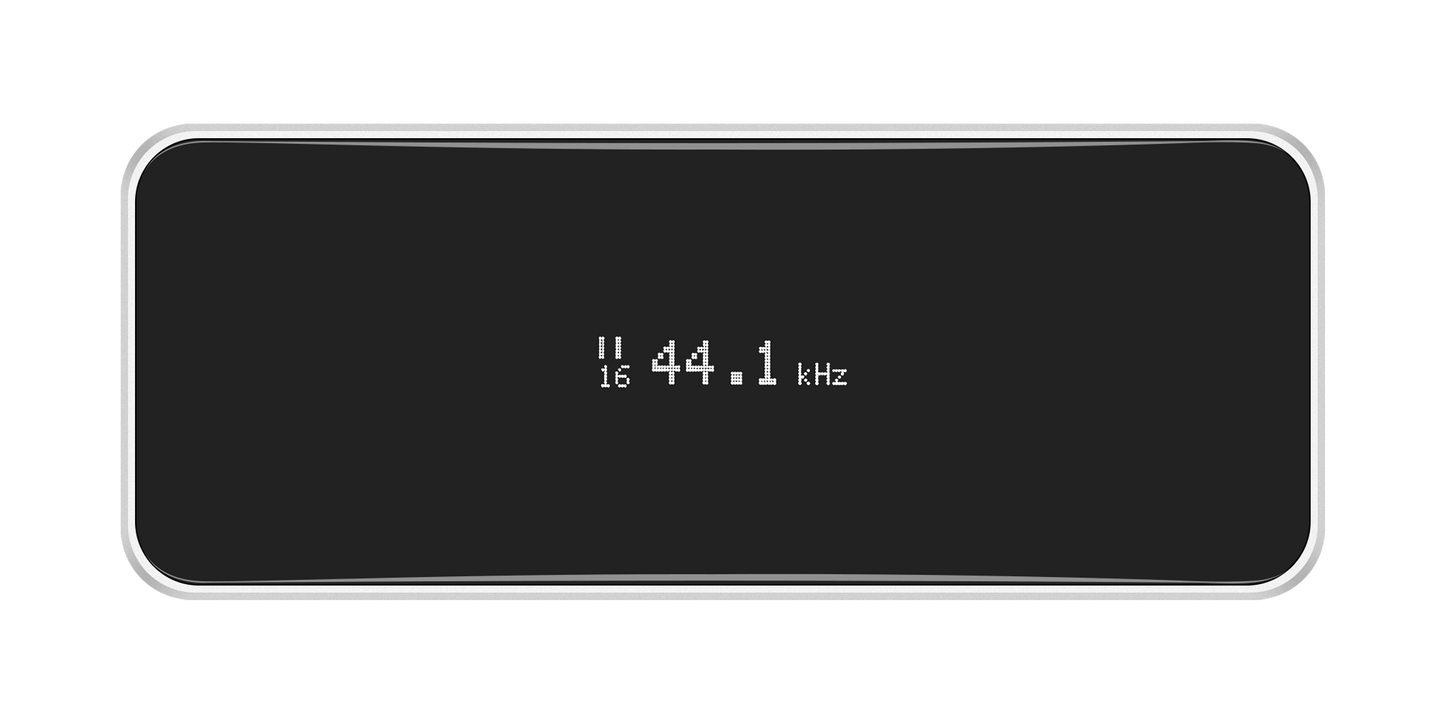
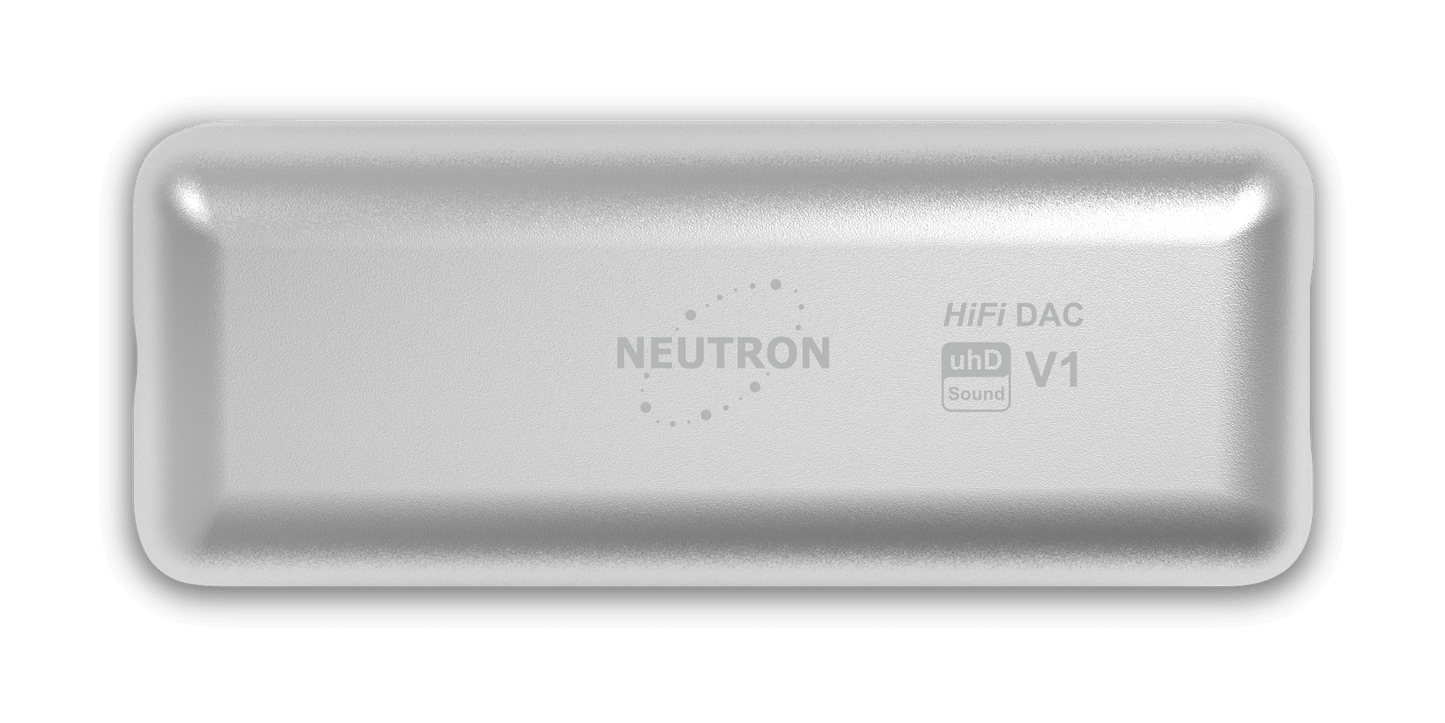
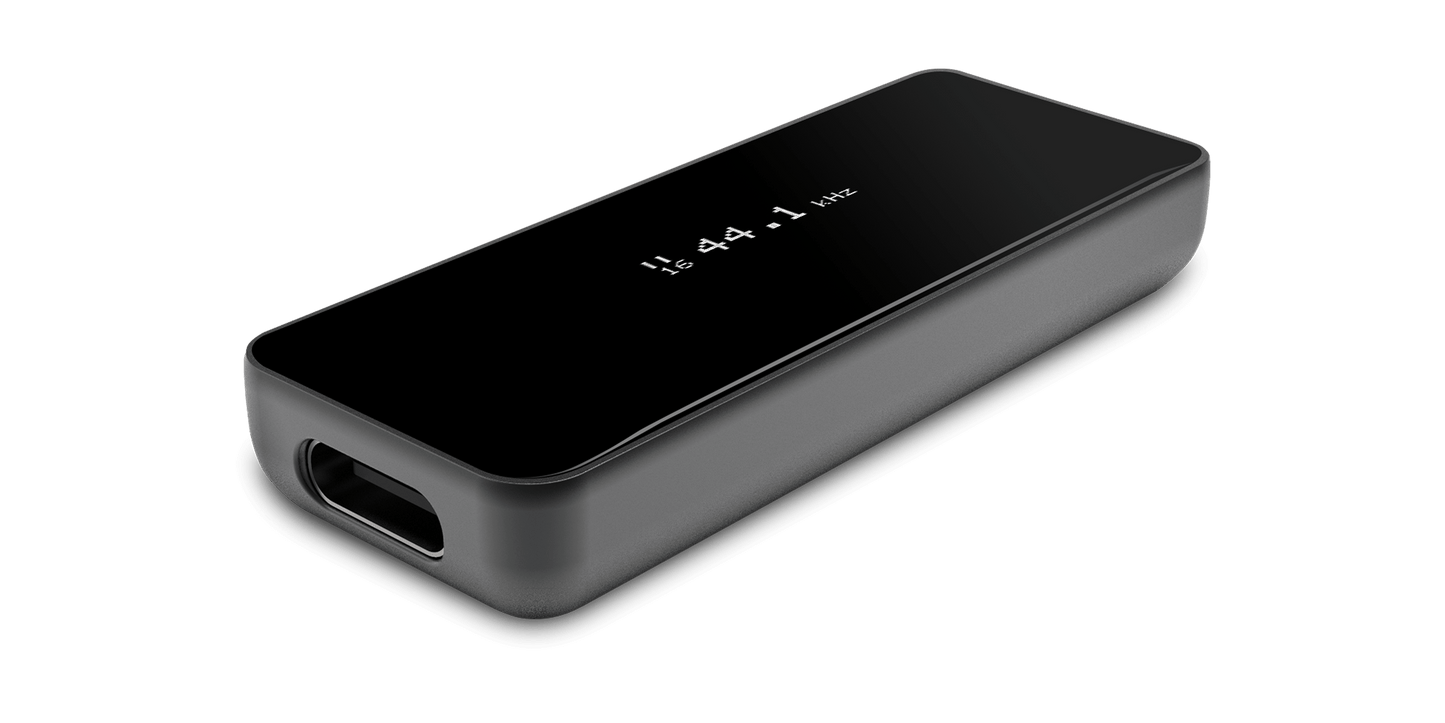
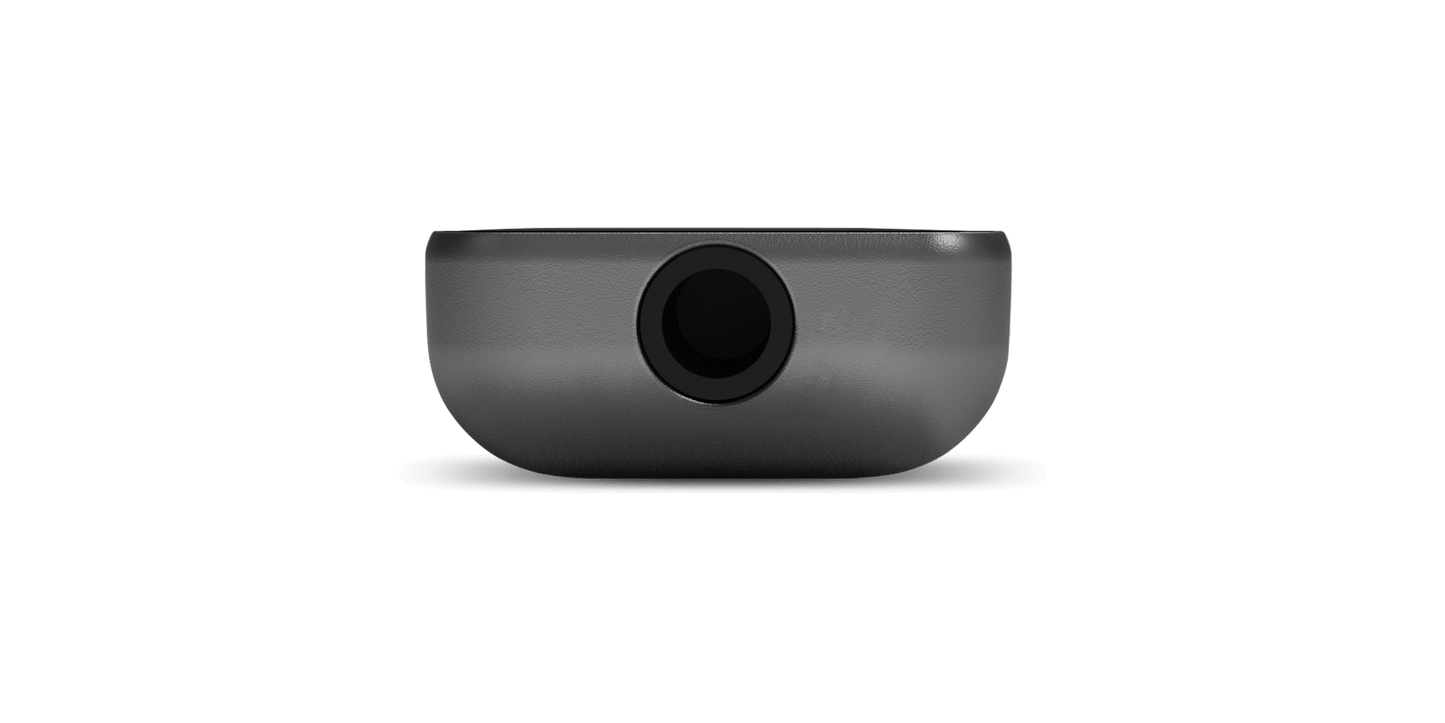
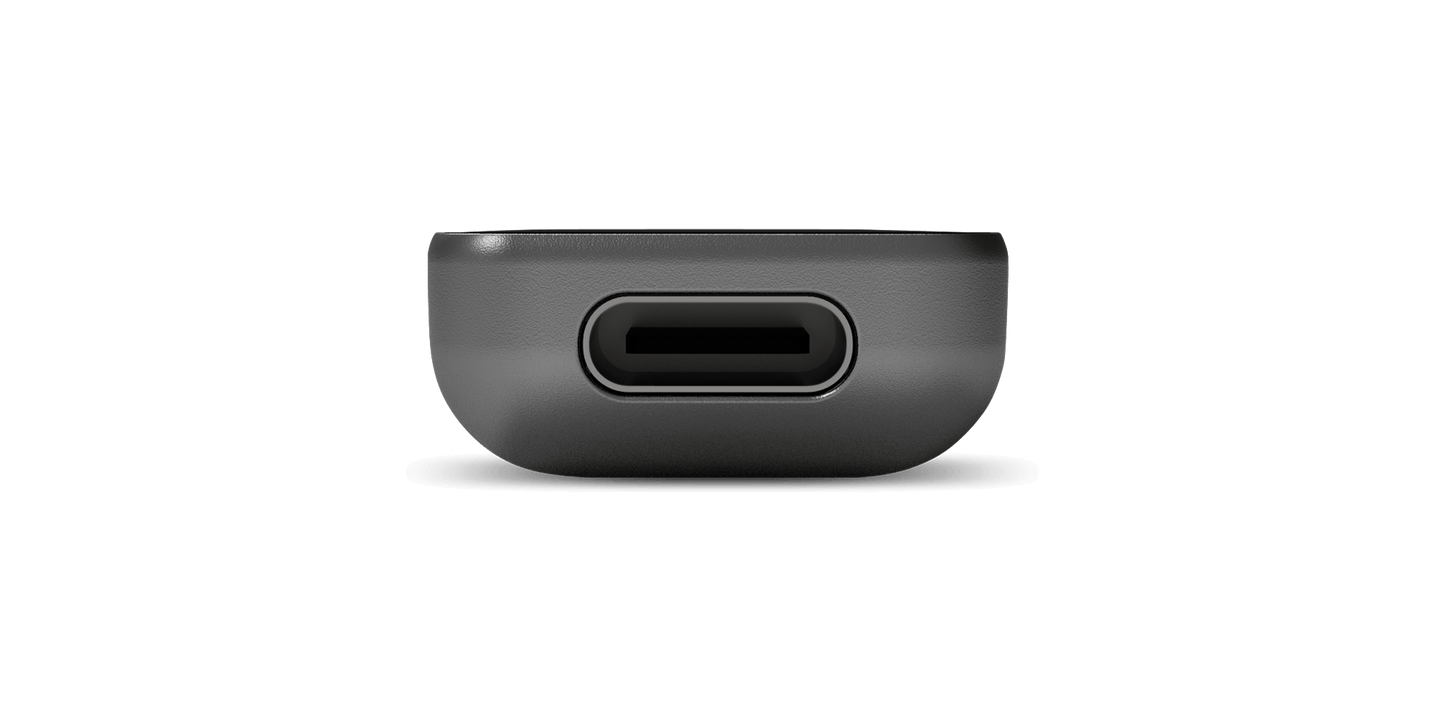
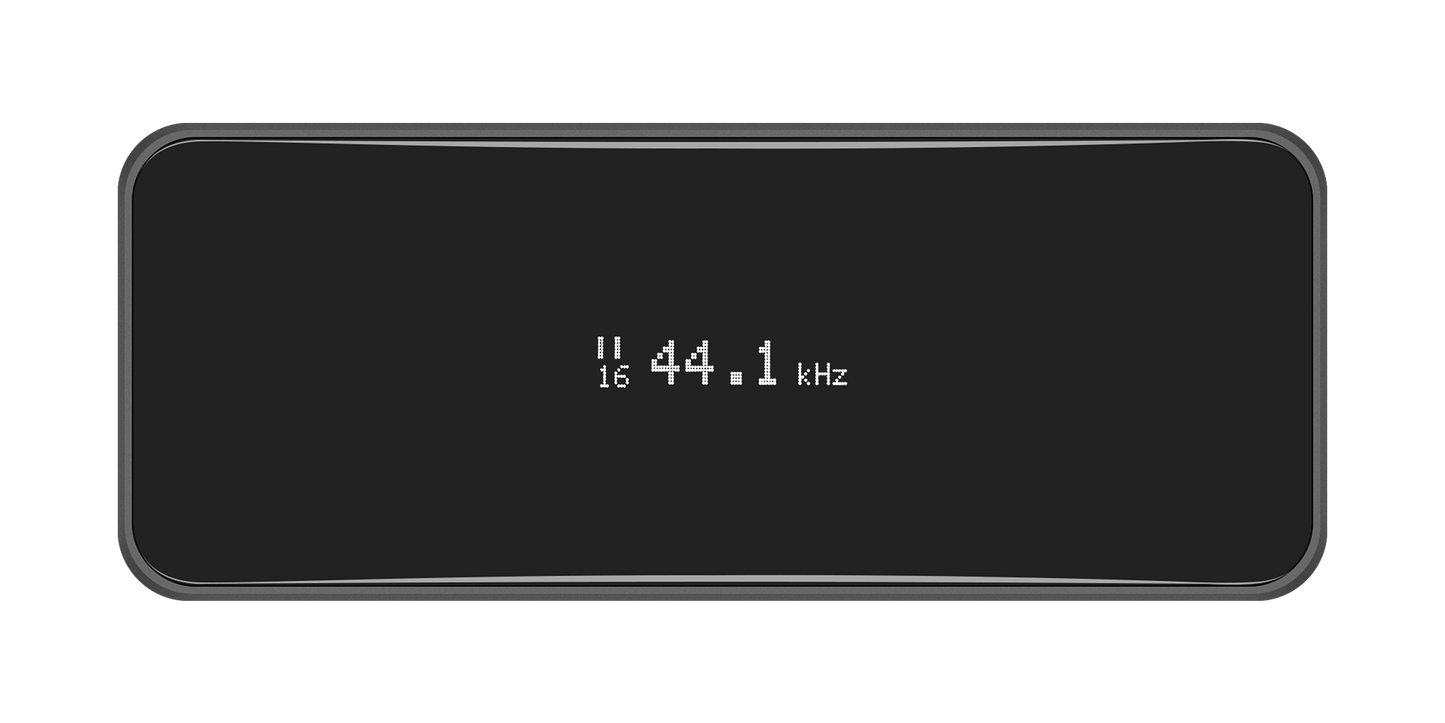
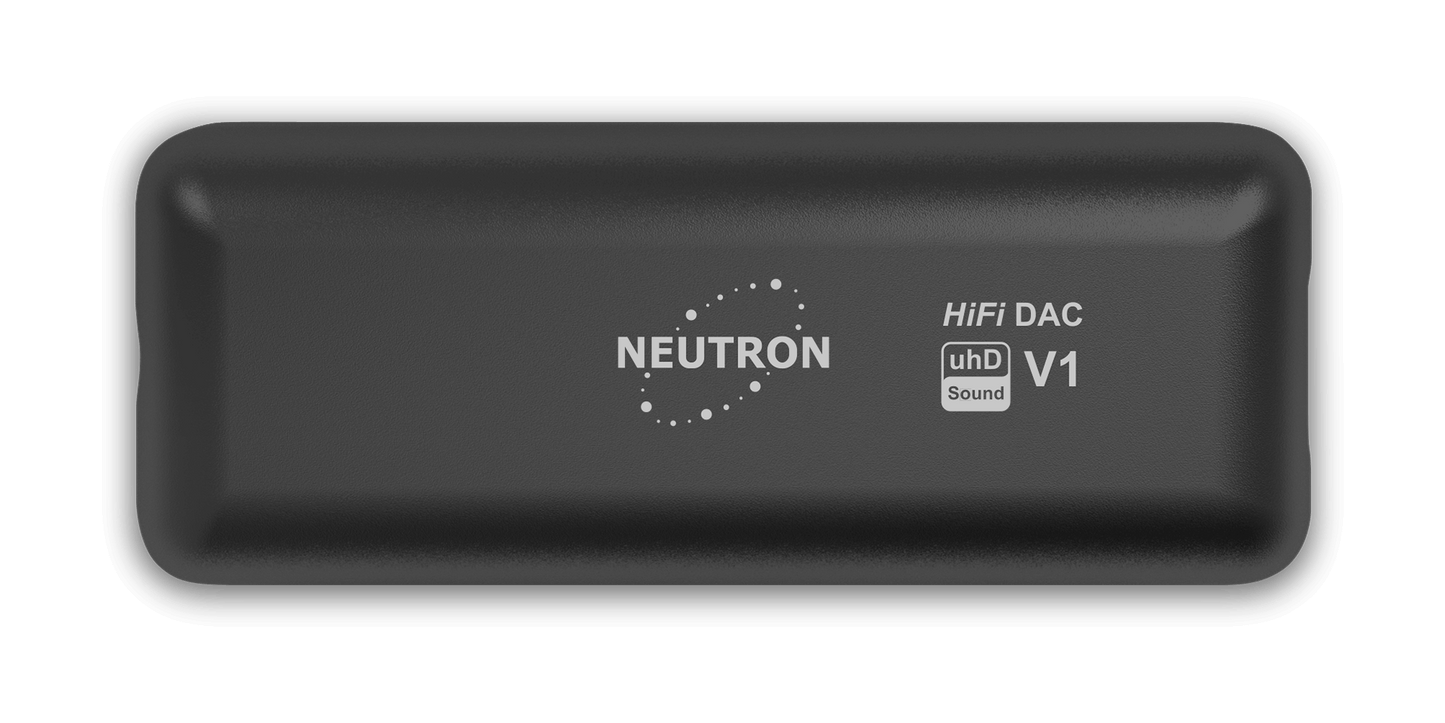
Ottimo per pilotare la mia cuffia Grado con un iPhone 16 pro. Il volume è al minimo e si può salire parecchio in volume.
Update: user clarified that mistakenly used 1Vrms Amp mode set via NConfigurator and that swithing back to a standard High Power 2Vrms mode solved the issue. Waiting for review update.
In general dac works ok but it does not switch on everytime I plug it in to the phone. Many times I need to switch off and on again or start tidal again. I had previous dongle dac it worked always perfectly
For technical issues, please contact directly via Contact Form in Neutron HiFi online store so that we could walk though possible causes together and find out whether the problem is related to DAC V1 or not. Review is not the best method for that!
Possible causes can be:
- bad USB cable (worn out or dirty USB-C connector inside, so it can be inserted in a full lenght): have you tried another?
- phone's hardware/software mulfunction: have you tried different phone or PC?
- outdated firmware: have you updated DAC V1 to the latest firmware with NConfigurator?
Please kindly reply to the e-mail sent in relation to the issue you reported here, or just respond via Contact Form.
Once I got it to work, it sounded great. The instruction on how to set it up could do some work on it. It never mentioned it would act like a standard USB to ear piece. In addition, the display showing the music playing, 192Kb would disappear on device. The number of times to work with neutron app would ask to control the device so far a minimum 2 times before it would work.
Best product i ever buy. Excelent sound and features.
Great product. Recommend
